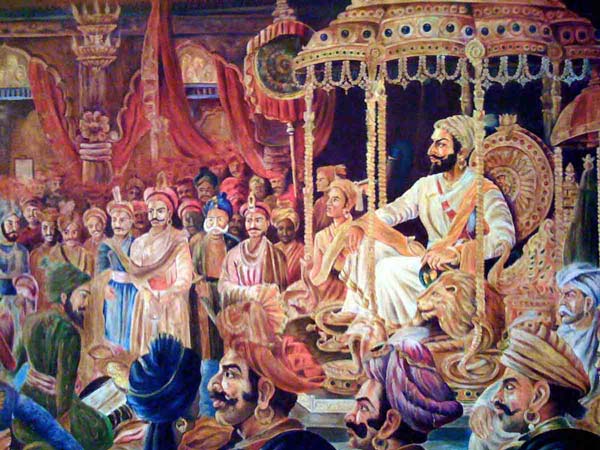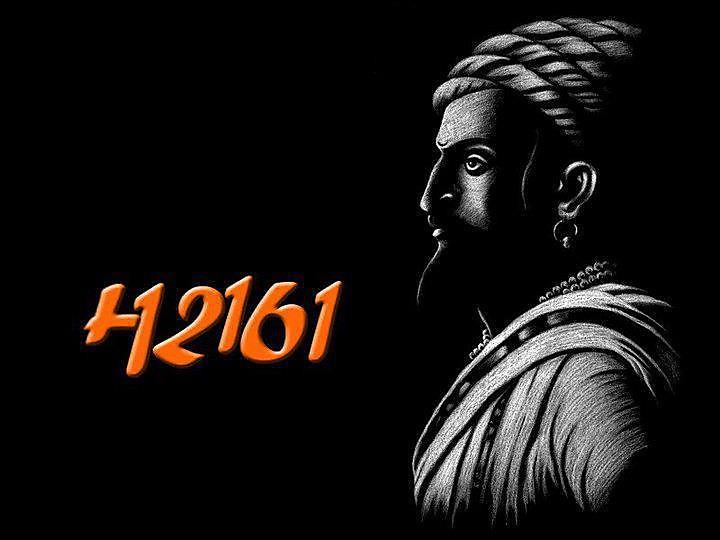Maratha polity was a monarchical characteristic. The king was head of the state office of the king was hereditary. Maratha king announced high titles like Chatrapati. Elements of centralized polity would present in the Maratha state system. Swarajya was divided into several provinces known as Tara.
The provincial chief was appointed by the king himself. Feudal elements were also present in Maratha polity. Direct control of the king was limited to Swarajya i.e. central zone of the Maratha kingdom. In peripheral areas, Deshmukh’s used to rule as autonomous entities. The control of the Maratha king over Deshmukh was nominal. Elements of the welfare state would also present in the character of the Maratha political system because the Maratha king used to issue Jagirs & other grants to the poor man of religion & learning.

The Levels of the institution of administration were fairly high in the Maratha state. Asthapradha enjoyed a place of central significance in Maratha’s political system. This institution comprised 8 ministers of Maratha king who looked after specific department such as the department of finance(Amatya), military(Sir-i-Nobal), judicial system(Nyayadhish), foreign relation(Sumant/Dabir), welfare activities(Panditrao), Royal communication(Sachiva) & Prime Minister(Peshwa).
Forts enjoyed a place of great significance in Maratha state systems. These forts were not only centers of military power but also the center of administrative at the local level.mThe local life revolved around the fort, special attention was paid to the construction & maintenance of the fort. There were many dozen of forts in the Maratha kingdom.
Maratha’s polity was secular in character. Maratha polity was based on strong imperialistic because the polity of territorial expansion was followed by Maratha rulers to raise their power & prestige. Under Peshwas, the Maratha state got transformed into a confederacy. The rise of Peshwas was followed by the rising of other local commanders. Such as Holkar, Sindhiya of Gaikwad of Baroda, Bhosale–Nagpur.
Maratha Fiscal & Financial Components
The political rise of Marathas was accompanied by the creation of a sound, fiscal financial system by Maharaja Shivaji. The system comprised of three main components which could be identified as Land revenue and other taxes coming from Swarajya, Sardeshmukhi paid by Deshmukh and Chouth collected from a neighboring kingdom.
Maratha Land Revenue System
Maharaja Shivaji established a sound & efficient Land revenue system in c.1678 CE. This system combined the features of revenue administration developed by Malik Amber as well as Mughals. Shivaji adopted good elements from everywhere to strengthen the financial background of the Maratha Kingdom. Maratha Land revenue developed by Shivaji was based on the survey & measurement of land. A land survey was carried out in 1678, by Annaji Datto. Kathi, Bigha & Chavar were used as units of measurement (20k equals to 1Bigha; 120B equals to 1Chavar).
The fertility of soil & type of crops being cultivated was taking into account at the time of assessment of Land revenue. The full rate of Land revenue was not charged from land newly brought into cultivation rate was gradually increase to full years over a period of 8 years. Land revenue was collected twice a year at the time of Rabi & Kharif season to ease the burden on peasants.
Peasants were allowed to pay Land revenue in cash or kind. The landlords were used in the revenue collecting process but they were not allowed to collect extra from a peasant. A part of collect revenue was given to them by the state as remuneration. Initially, the rate of land revenue was fixed at 1/3rd of the produce. Peasants were required to pay other taxes as well but to ease the burden on peasant & to make the system easy other taxes abolished & the rate of Land revenue increased to 40.
Sardeshmukhi
10% of total income was paid by Deshmukh as Surdeshmukhi as a mark recognition of the Maratha crown. The entire income coming from Sardeshmukhi was considered to be the personal income of the Maratha king. It was reserved for his personal expenses.
Chouth
Chouth referred to 25% of total income paid by the neighboring kingdom to Marathas as a mark of acceptance of Maratha overload ship. Initially, Maratha attacked neighboring kingdom annually to mobilize resources. This attack resulted in a huge loss of man & money in the neighboring kingdom to avoid such unnecessary attack this system was developed.
Total proceeds of Chouth were distributed between kings & his commanders. 15% of the income of Chaouth received by local Maratha commanders such as Bhosle, Holkar, etc. 6% of Chouth reserved for Pant, Sachiv for the expenditure of his department. 3% reserved for the king to issue donation. 16% remaining was received by the king for managing state expenses.
System of Chouth played important role in stabilizing the relation of Marathas with neighbors but these neighboring states like Rajput, Nizam & Nawab of Bengal continued to harbor a strong sense of reassessment against Maratha. It was because of this discontent prevailing among various Indian entitles against Maratha, they didn’t support Maratha whole heard in the 3rd battle of Panipat. In fact, many Indian rulers supported Abdali contributed to the disastrous defeat of Maratha in the battle of Panipat.

